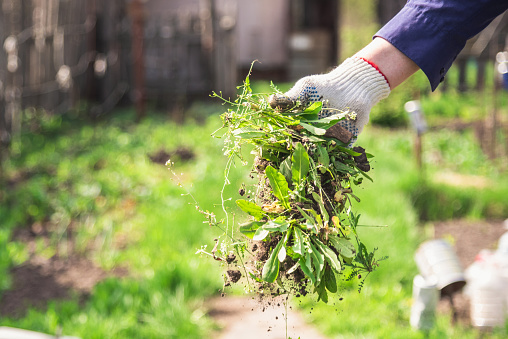If your garden is not a simple flat rectangle of a few square meters, it can be difficult to plan future plantings without the help of a precise and well established plan. Google Maps can help!

1- Search for the plot on Google Maps
First of all, it is necessary to open your Google account and to identify yourself. If you don't have a Google account, it will be necessary to create one. In this case, follow the instructions step by step and don't forget to check and keep your password as soon as you register!
To start, you need to find the location of your garden on Maps. To do this, go to maps.google.com and enter your address and then, at the bottom of the screen, tap on the 'Satellite' menu. Zoom in as close as possible to your house.
Always at the bottom of the screen, you will notice that there is a scale, something important in order to make the future map of your garden to scale.
There are two cases:
- Either your garden is well defined, in which case, go to step 2.
- Or the photo is a little dated and no longer corresponds to reality, or shadows and trees interfere with the delimitation. In this case, you will have to be more precise and install Google Earth Pro on your computer to have access to a better point of view and to the option 'Map over time'. Simply adjusting this view of your garden will update the map with scale on Maps. You can then proceed to the second step.
2- Use Google Drawings
When you are on the map in Google Maps, copy your screen:
- On Windows, select 'Print Screen' ;
- On Mac, press Control+Shift+3 to save your screenshot.
In Google Drawings, hold the Ctrl key and press V to make your image appear in the center window.
Now it's time to resize your image on the part that is just your garden so that it fills the whole page. To do this, click on the image and then click on the 'Crop' button to grab a corner and reduce the space until only your garden fills the page.
Make a second copy and keep it on top of the first to get the scale, use the crop tool to get a 10ft scale. If it is in meters, click on the scale icon once to change it to ft.
3- Determine the planting areas
If your garden is more rectangular, use the angled connector tool (in the toolbar under the term 'Line'), otherwise use the 'line' tool or the one that best suits the specificity of your garden. The 'circle/rectangle' icon next to it can also be used depending on the shape you want to define.
4- Add the scale
Once the different zones have been determined and drawn, it is necessary to and import a grid. Once downloaded in your documents, import it in Drawings by clicking on 'Insert/Image/Import from computer'. A window opens then, go to your documents: select the previously downloaded grid.
Then, get the scale, which you have previously saved and position it on the screen where it suits you. Just below or above the grid will make it easier.
Resize your grid to match the scale. To do this, hold down the SHIFT key while you adjust your grid to your scale, so the angles will match perfectly.
5- Save and print
There are several ways to use this map of your garden to scale.
The first way is to work 'old school', using a pencil and eraser to lay out your plots at your leisure and think about your project fully.
To do this, drag the grid onto your map, copying it as many times as necessary in order to have many working options. You can change the colors of the shapes, make borders or use the grid in transparency to get the garden map of your dreams when you print it. Then you can fill it in at your leisure with a simple pencil!
If you're not afraid of technology, which I'm sure you are, if you've reached this stage, you can use the grid and shapes to prepare the plantings on any of your devices (tablet, smartphone, computer...). Then use the grid as a planting guide to determine the planting spaces according to the needs of each plant (you will find growing tips on our site by typing on our search engine 'Planting tomato' or 'Planting bean' etc. ...).
Then use the round tool that you can tint with the desired color and even add a letter in its center corresponding to the plant grown. Save and print your map or consult it directly in your garden from your medium.
This last technique has the merit of being quick for computer literates while allowing for infinite variations in plantings and saving several different possibilities in order to best adapt them to the reality of your garden.

